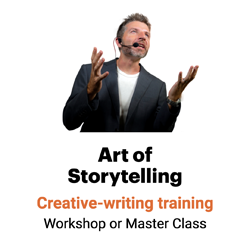If crime were a wild beast, we’d be more likely to cage it
If crime were a virus infecting our city, would we treat it differently than if it were a wild beast preying on our city?

Yes, we would, found two professors in the department of psychology at Stanford University. That’s the power of metaphor.
Metaphor is a figure of speech in which a word or phrase is applied to an object or action to which it is not literally applicable. “Crime is a wild beast,” for instance. This figurative language allows communicators to anchor ideas quickly — and change people’s minds and behavior.
Is crime a virus — or a wild beast?
In one experiment, professors Paul H. Thibodeau and Lera Boroditsky gave participants a report about increasing crime rates in the city of Addison and asked them to propose a solution.
Half the group received this introduction, followed by crime statistics:
The other half received this introduction, followed by the same statistics:
When the metaphor stated that crime was a wild beast, 74% of participants proposed catching and jailing criminals and enacting harsher enforcement laws.
“The metaphor is perhaps one of man’s most fruitful potentialities. Its efficacy verges on magic, and it seems a tool for creation which God forgot inside one of His creatures when He made him.”
— Jose Ortega y Gasset, Spanish philosopher and statesman
When it was framed as a virus, 56% of participants proposed tougher enforcement. These folks were more likely to propose investigating the root causes and treating the problem with social reform to inoculate the community, by eradicating poverty and improving education.
That’s the power of metaphor.
You don’t need to extend your metaphor …
In a second experiment, Thibodeau and Boroditsky made one change. Instead of developing an extended metaphor with vivid verbs like preying, lurking, infecting and plaguing, the researchers used a single, simple metaphor:
Crime is a beast ravaging the city of Addison.
Crime is a virus ravaging the city of Addison.
The results replicated the findings in the first study: Participants were more likely to suggest enforcement (62%) than reform (38%). But participants who’d read that crime was a beast were more likely to suggest enforcement (71%) than those who’d read that crime was a virus (54%).
The single metaphorical noun was enough.
That’s the power of metaphor.
… But you do need to set it up at the beginning.
In a third study, Thibodeau and Boroditsky played with where in the message they introduced the metaphor. Instead of leading with the analogy, they concluded with it.
And instead of asking participants to propose solutions, the researchers asked them to research solutions.
This time, the metaphor made no difference. Participants who read the crime-as-a-beast metaphor were nearly as likely to gather additional information about the city’s social situation (69%) as those who read the crime-as-a-virus metaphor (64%).
Location matters: Set up your metaphor at the beginning of your message, not just at the end. (And please, avoid dead metaphors, aka clichés.)
Readers don’t register metaphor’s influence.
In all of the experiments, participants didn’t recognize the power of metaphor.
- In the first experiment, just 7% identified the metaphor as influential.
- In the second experiment, participants identified the crime statistics, which were the same for both groups, and not the metaphor, as the most influential aspect of the report.
- In the third experiment, just 10% of participants reported that the metaphor influenced their decision.
How metaphors work in the real world
Metaphor changes minds — and public policy — outside the lab as well as in, Thibodeau and Boroditsky point out.
When Ronald Reagan declared a war on drugs in the 1980s, policies mandated longer, harsher sentences for drug-related crime. Since then, the incarceration rate has more than quadrupled in the United States.
“If a picture is worth a thousand words, a metaphor is worth a thousand pictures.”
— Daniel Pink, author, A Whole New Mind
A crime-prevention program run by an epidemiologist in Chicago treats crime according to the same regimen used for diseases like AIDS and tuberculosis, focusing on preventing spread from person to person.
When police officers saw their jobs as hunting down and catching a serial rapist, they decided to keep some information from the community so they could set traps for the suspect, according to an analysis by G. Kelling. The rapist attacked 11 girls over 15 months before being captured. If police had shared the information, focusing instead on inoculating the community against further harm, Kelly said, they might have prevented some of the attacks.
The girls, Kelling writes, “were victims… not only of a rapist, but of a metaphor.”
That, too, alas, is the power of metaphor.
____
Sources: Paul H. Thibodeau and Lera Boroditsky, “Metaphors We Think With: The Role of Metaphor in Reasoning,” PLOS One, Feb. 23, 2011
G. Kelling, “Crime and metaphor: Toward a new concept of policing,” City Journal, Vol. 1, 1991

Leave a Reply